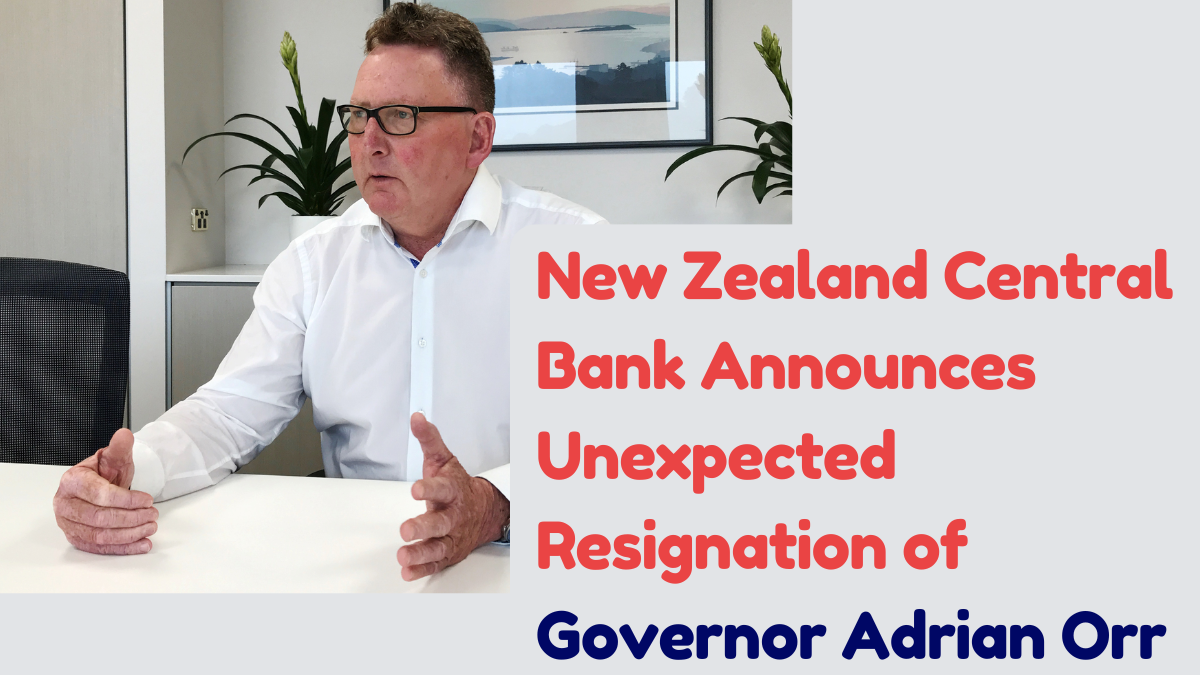In an unexpected move, Adrian Orr, the Governor of the Reserve Bank of New Zealand (RBNZ), has announced his resignation, effective March 31, 2025. His departure leaves a significant gap in the leadership of the country’s central bank, which has played a key role in steering the New Zealand economy through a period of recovery.

Economic Landscape Under Orr’s Leadership
Orr’s tenure has seen New Zealand navigate through challenging economic times, including the global pandemic and inflationary pressures. Under his leadership, the RBNZ was instrumental in stabilizing the financial system, ensuring liquidity in the markets, and implementing policies to guide economic recovery. Although Orr is stepping down, New Zealand’s economy remains on the path to recovery, and the country’s financial system is relatively stable.
The Transition of Leadership
With Orr’s resignation set for the end of March, the Reserve Bank is now in the process of planning a leadership transition. Christian Hawkesby, the Deputy Governor of the RBNZ, will take over as the interim governor until the end of March.
From April 1, 2025, the RBNZ Board will appoint a temporary governor, who will serve for up to six months. The new appointee will be selected based on the recommendations provided by the RBNZ Board, which is expected to consider both internal and external candidates for the role.
What This Means for New Zealand’s Financial Future
The resignation of such a key figure raises questions about the future direction of New Zealand’s monetary policy. However, with a smooth transition planned, the RBNZ aims to minimize any disruptions to its current economic strategy.
Investors and market analysts will be closely watching how the leadership change affects New Zealand’s interest rates, inflation control measures, and overall financial strategy.
Key Points to Remember:
- Adrian Orr resigns as Governor of the Reserve Bank of New Zealand (RBNZ), effective March 31, 2025.
- Deputy Governor Christian Hawkesby will serve as interim governor until March 31.
- A temporary governor will be appointed starting April 1 for up to six months, with selection based on the RBNZ Board’s recommendations.
This leadership shift at the RBNZ is a pivotal moment for New Zealand’s financial and monetary policy, and it will be interesting to see how the change impacts the country’s economic stability going forward.
Conclusion
Adrian Orr’s surprise resignation marks a significant change at the helm of New Zealand’s central bank, raising questions about the future course of monetary policy. While the leadership transition has been planned with care, ensuring minimal disruption, the financial community will be closely monitoring how the temporary leadership impacts New Zealand’s economic outlook. With the appointment of a temporary governor and the ongoing recovery of the economy, the RBNZ’s strategies will remain a key focus in the coming months.
As New Zealand continues its economic recovery, it will be essential for the new leadership to maintain stability and ensure the country’s financial policies adapt to the changing global landscape.
People May Ask
1. Why did Adrian Orr resign from his position as Governor?
Adrian Orr’s resignation was unexpected, and the reasons behind his departure have not been publicly detailed. However, it is part of a planned transition process, with a temporary governor to take over after his resignation.
2. Who will take over the role of Governor of the Reserve Bank of New Zealand?
Christian Hawkesby, the current Deputy Governor, will serve as the interim Governor until March 31, 2025. After that, a temporary governor will be appointed by the RBNZ Board, based on their recommendations.
3. How will this impact New Zealand’s economy?
While the resignation of a key figure like the governor could cause some uncertainty, New Zealand’s financial system is expected to remain stable. The RBNZ has planned for a smooth leadership transition, which will help maintain continuity in its economic policies.
4. How long will the temporary governor serve?
The temporary governor will serve for a period of up to six months, from April 1, 2025, onward, while the RBNZ Board looks for a permanent replacement.
Click here to learn more.
Pari is a passionate writer known for captivating stories that blend imagination and reality. Inspired by travel, history, and everyday moments, Pari crafts narratives that resonate deeply with readers.
